

Test HK-G09
February 16/06
Cold heater
Cold fuel
Small load
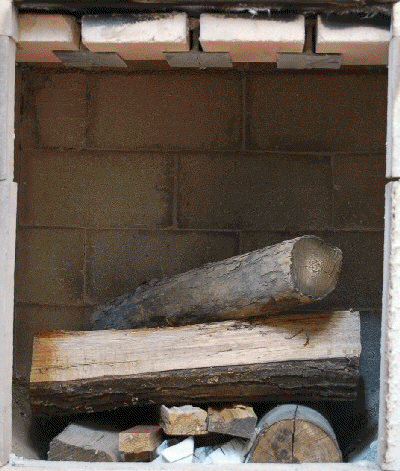 |
Test HK-G09 23.9 lbs Ashbox door closed with air supply open Grate was opened at 60 minutes. Fire had to be poked several times to keep it burning at a reasonable rate. |
|
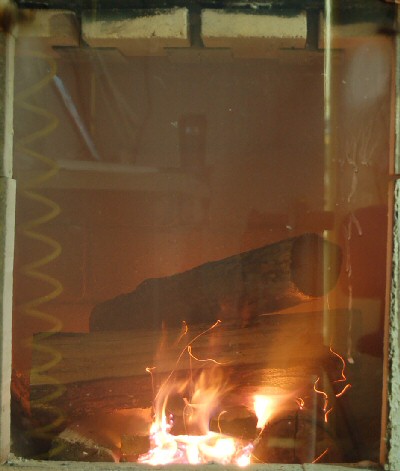 |
1 minute This test is similar to the preliminary test, G-01 which did not have enough protocols in place yet to yield useable data. The fuel load was clearly too small, since it had to be poked several times in order to maintain a burnable configuration. Test G-01 had one extra piece of fuel, and burned much better.
|
The animation shows a frame every 30 seconds of the burn for the first twenty minutes. After that, it shows a frame every 5 minutes, so is speeded up by a factor of 10 until the end. The animation loads frame by frame, and then starts repeating at a frame rate of 2 fps. To see it slowly, hit the "reload" button. |
 |
Interestingly, this fuel loading is only 6 lbs less than the average 15 kg traditional fuel load for European heaters. It explains why the "conventional wisdom" is to use small fuel. This burn would have benefitted greatly from smaller pieces. With a more typical larger load, the fire needs to be restrained rather than speeded up, in order to contain particulate emissions. To use smaller wood, a much larger firebox would be required. |
|
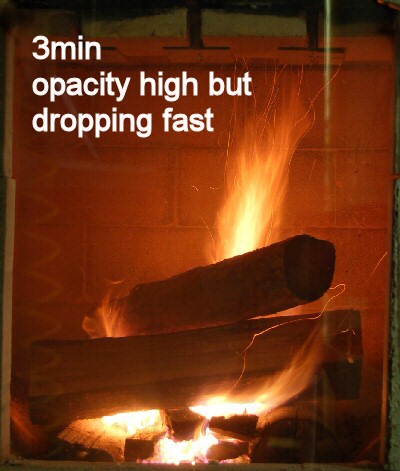 |
|
|
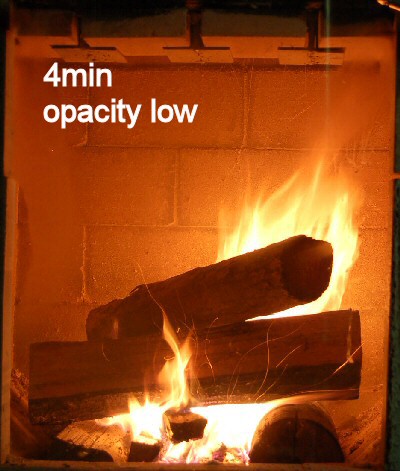 |
This burn was sluggish. Yet, there was only a significant opacity peak briefly at the cold start. This was somewhat unexpected. The fuel is very well seasoned. |
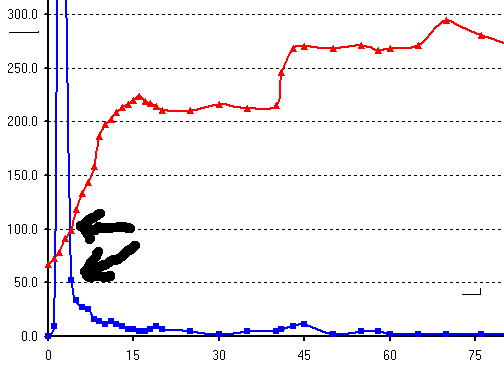 |
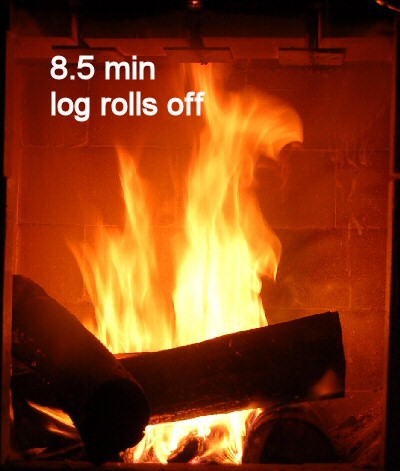 |
|
The fire is actually not as bright as it looks in the photographs. The time lapse series is still being taken with automatic exposure, which gives an unrealistic bright look to the slow parts of the fire. For fires that are very fast and hot, the automatic exposure makes the fire look more reddish than it actually appears to the eye. Right now, the fire is still bright because kindling is still burning. Note that the edge of the firebrick slit heat shields at the very top
of the frame. |
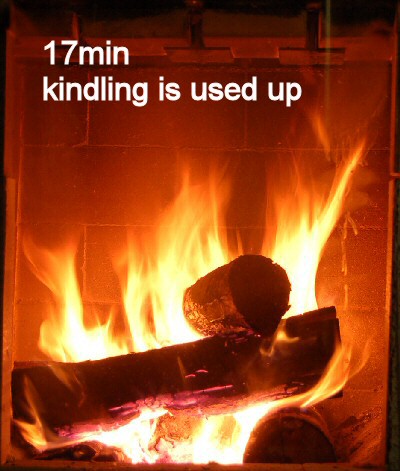 |
|
|
 |
Exposure at 8 minutes was Exposure here is Exposure below (30 min) is |
|
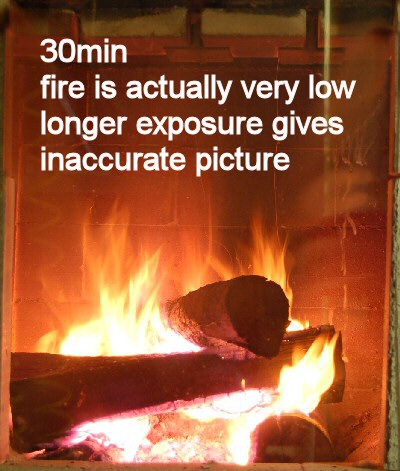 |
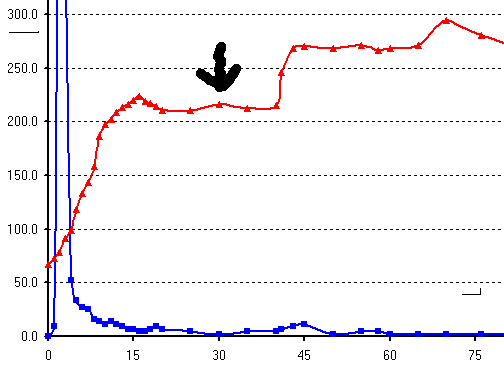 |
|
 |
||
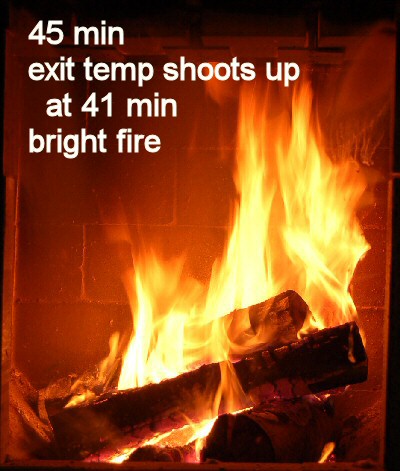 |
Note the small opacity peak. Flue gas readings would be useful at this point. They are not set up yet. Nevertheless, it is surprising how much one can learn with minimal equipment.
|
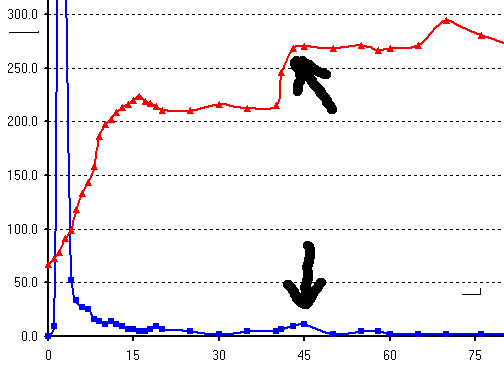 |
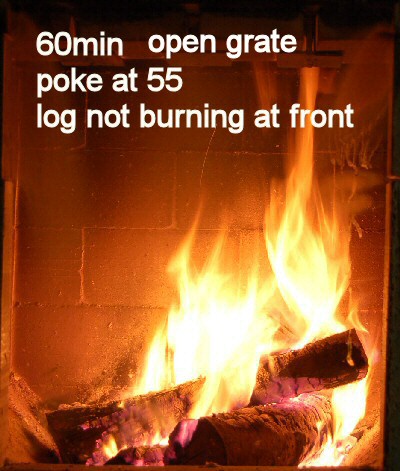 |
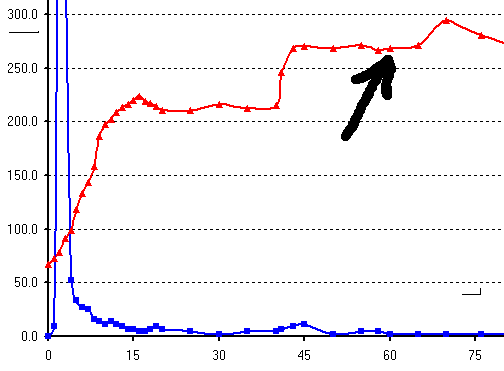 |
|
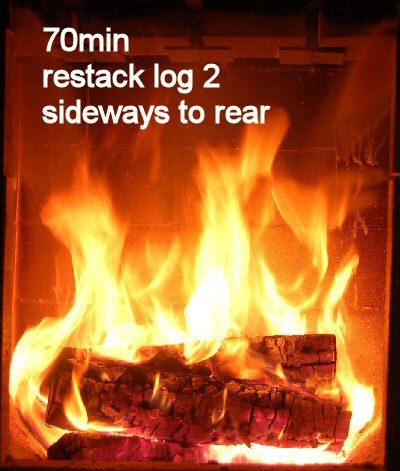 |
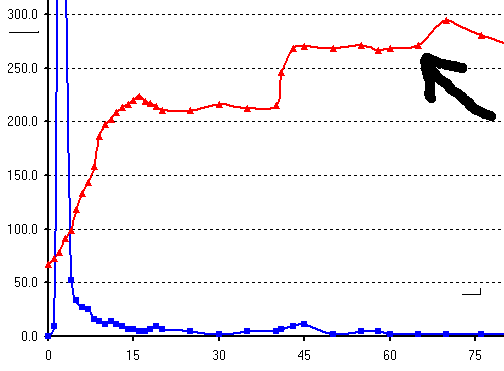 |
|
|
Fuel load Pieces are numbered 1 - 5, from left to right. |
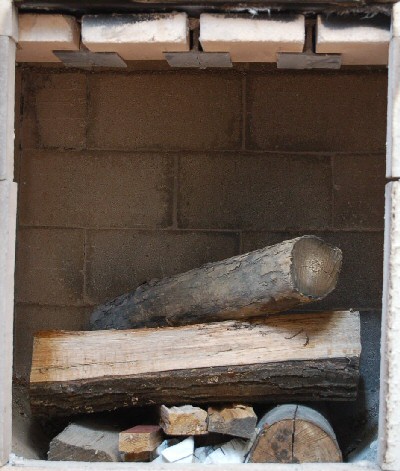 |
This page was updated on
January 8, 2008
This page was created on February 17, 2006